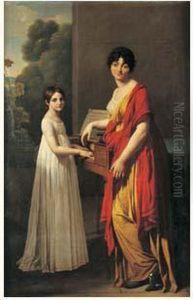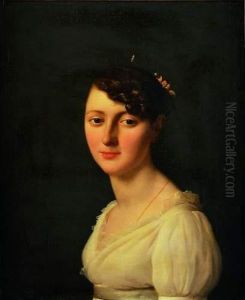Gioachin Giuseppe Serangeli Paintings
Gioacchino Giuseppe Serangeli was an Italian painter, born in 1768 in Rome. He was a student of the acclaimed painter Domenico Corvi and later, after moving to Paris in 1786, he became a pupil of Jacques-Louis David, the leading French neoclassical artist of the time. Under David's tutelage, Serangeli developed his painting technique and embraced the neoclassical style, which was characterized by a return to the classical ideals of simplicity, order, and harmony.
During his time in France, Serangeli witnessed the tumultuous period of the French Revolution and the rise of Napoleon Bonaparte. These events influenced his artistic work, and he produced several portraits and historical paintings reflecting the spirit of the era. Serangeli's works are known for their clear forms, balanced compositions, and the use of lighting to highlight the subjects of his paintings.
Despite his connection to France, Serangeli returned to Italy due to the political instability in France. He settled in Rome, where he continued to work and teach art. In Rome, Serangeli became part of the artistic community and received commissions from various patrons, including members of the Roman aristocracy and the Church.
Serangeli's contributions to art were not limited to his paintings; he also played a significant role in the education of young artists. He was known for his teaching and his efforts to promote the neoclassical style among the next generation of Italian painters. Serangeli's legacy is preserved in the collections of various art galleries and museums, where his works continue to be studied and appreciated for their historical significance and artistic merit.
Gioacchino Giuseppe Serangeli passed away in 1852 in his native city of Rome. Throughout his long career, he witnessed significant changes in the European art scene and remained committed to the neoclassical ideals that shaped his early development as an artist.

